How to properly tie a climbing rose to a support?
Knowing how to tie a climbing rose, a florist can solve several problems at once. The bush is given a beautiful shape, the correct distribution of the shoots provides access to the sun's rays and simplifies the care of the plant, which allows you to count on abundant and uniform flowering. The support for the rose is installed simultaneously with the planting of the seedling, so as not to injure the roots in the future.
Garter options
Rose shoots are deprived of the ability to wrap around the structure on their own and for this reason they need a garter. You can fasten the lashes to the support in different ways. The main thing is that the bush looks as impressive as possible.
The dressing can be done in different ways:
- horizontally - in this case, the lashes are fixed on the lattice or trellis;
- spiral - with such a fixation, the shoots circle the column;
- vertically - the stems of a climbing rose are fixed along arches, tree trunks and other supports dug into the ground;
- fan-shaped - lashes are fixed in the form of a fan near a wall or hedge.
If bush varieties are capable of producing lush flowering without human intervention, then in order to get a large number of buds from a climbing rose, it is necessary to take into account the peculiarities of its growth and properly tie the stems.
Before in the spring to make a garter of lashes to the support, you should wait for the moment when the buds swell on the shoots of the second order. The premature garter of young shoots will lead to very poor flowering. When fixing the lashes on the support, it must be borne in mind that new branches grow at an angle of 30 degrees to the main stem. It is in this position that they should be fixed.
If you tie the branches strictly horizontally, the rose will begin to form a large number of side branches, and this is completely useless. A spiral-shaped bandage is best for bud-setting and long-term flowering. Using the vertical garter method, you need to take into account that in this case the lashes will actively grow in length. To stimulate branching, at the required height, the crown of the stem is directed downward.
The fan-shaped version is often used to decorate unsightly surfaces (peeling walls, old fence). If necessary, using this method of garter climbing roses, you can build a luxurious flower partition in any corner of the garden.
Garter materials
The preservation of the health of roses and the decorative effect of the bush depend on the used garters. The best from this point of view are:
- reinforced plastic wire;
- special plastic clips for vines;
- garter belt "Agrotex".
These materials are characterized by a long service life (up to 5 years), high strength, resistance to decay, and ease of use. When using them, the rose looks neat, and its shoots are not damaged.
Ordinary metal wire is not used for fixing, otherwise the delicate shoots may be damaged. You should not use strips of cotton material, linen twine: natural materials easily absorb moisture and do not dry out for a long time, which can provoke fungal diseases.
Garter rules
The garter of the bush in the spring is carried out after sanitary pruning. All weak, diseased shoots frozen in winter are removed on the plant. Then it all depends on the varietal characteristics of the rose:
- Formative and rejuvenating pruning of ramblers is carried out after flowering - in August or September.
- In spring, all shoots older than 4 years are removed from climbers, the remaining stems will make up the skeleton of the bush. In the future, long shoots are left, and the lateral ones are shortened.
The spring garter begins with the lowest lashes. The shoots are loosely fixed to the support, leaving free space for the growth of the stem in thickness. In the future, the lengthening lashes are tied up, giving them the desired direction.
Support requirements
Climbing rose supports can be made from a wide variety of materials and shapes. When choosing a garter method, you should also take into account the varietal group of a climbing rose:
- If the plant is a representative of ramblers, its shoots can reach a length of 4 m. These roses have long flexible stems, and flowering occurs on the shoots of the last year. For ramblers, pergolas, arches, pillars, horizontal trellises are suitable as a support. They are often planted near the gazebo.
- Roses belonging to the group of climbers are spreading bushes 2.5 m high with strong rigid stems. Their bloom occurs on last year's and fresh shoots. Climbers are best planted near residential buildings, hedges, gazebos.
Supports must meet the following requirements:
- Reliability. The structure must be stable and durable. It is necessary to install it so that the support cannot collapse due to a gust of wind. The frame must be able to withstand the weight of the flowering shoots.
- High decorative qualities. Supports for climbing roses should be in harmony with the overall style of the garden and look aesthetically pleasing. If the structure was made independently and there is no confidence in its external advantages, it is better to make the support unobtrusive, for example, by painting it in a dark green color.
- Proportionality. The dimensions of the arch, pergola and pillar should correspond to the length of the rosebush whips. You should not immediately set a high structure for a young plant. Otherwise, the support will look bulky and ugly.
For those who want to save money on the purchase of ready-made structures, you can start making them yourself or fix the shoots on the vertical surfaces already available on the site (house facade, gazebo, canopy, hedge).
The fancy shape of the supports should be avoided, because when preparing the rose for winter, the shoots will have to be removed each time - you should not further complicate this process. If the stems are arranged crosswise, untangling them will take a lot of effort and time. The use of a fine mesh as a support structure is advisable only for winter-hardy roses that do not require shelter, or the support must be removable.
Rose shoots cannot be attached directly to metal surfaces (a fence or corrugated sheet, galvanized steel, corrugated board, which is sometimes used to cover walls). A wooden lattice is installed 30 cm from the wall or fence, on which the curly rose is fixed.
Pros and cons of various materials
A variety of materials are used to make arches and other supports for a climbing rose. Each of them has its own advantages and disadvantages:
- Wood. The pluses of the material include its availability and low cost. Even a person without special skills can cope with the processing and joining of wooden parts. Among the shortcomings, one can note the fragility, the need to use additional materials for processing (special impregnations, paint).
- Metal. Arches welded from metal are highly durable and serve for many years. However, not everyone will be able to make such a support on their own - equipment in the form of a welding machine is needed. When buying, transporting the finished product can be difficult, and such an arch is not cheap.
- Plastic. Supports for climbing roses are often made of plastic arches and pipes. This design is easy to assemble and mobile.If necessary, the arch can be easily disassembled and reassembled, rearranged to another place. Another advantage is that the plastic support does not need to be painted. The disadvantage of the material is instability to low temperatures; for the winter, the structure will need to be removed to the barn.
- A rock. Supports made of this material are durable and fundamental, they look noble. The only drawback is the relatively high cost of natural stone. And, of course, such a support will not look appropriate in a small garden.
Sometimes, in the manufacture of supports, several different materials are combined at once. For example, pillars are made of brick or metal, and wooden slats or plastic pipes are used for the upper part of the structure.
The garter of climbing roses directly affects the quality of their flowering. Correct formation and fixing of the bush on the support will facilitate the laying of a large number of buds. To do this, you need to strive to place part of the branches horizontally. When tying non-covering roses, it is permissible to pass the stems through the cells of the lattice. Additionally, roses are provided with quality care.
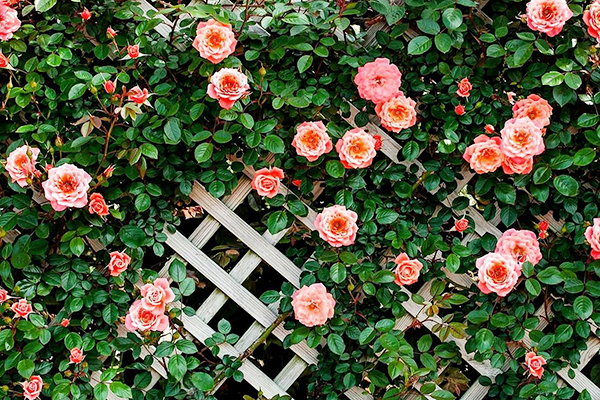
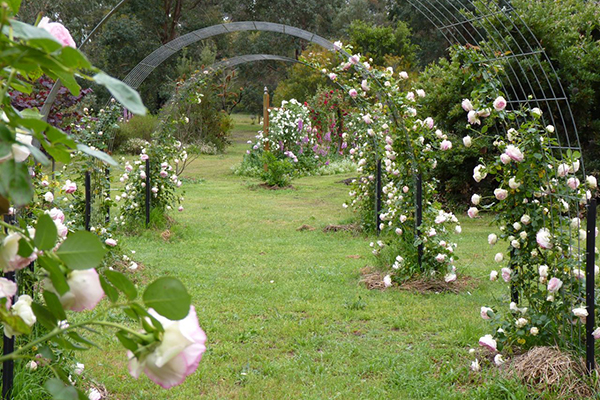
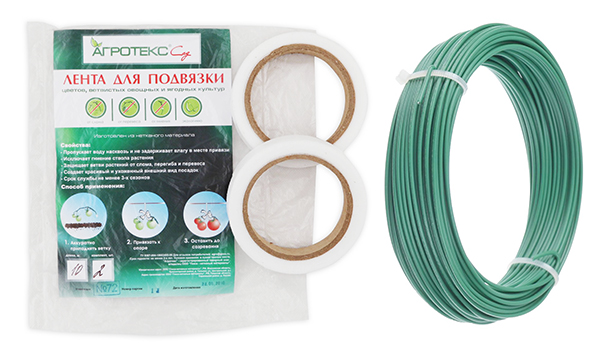
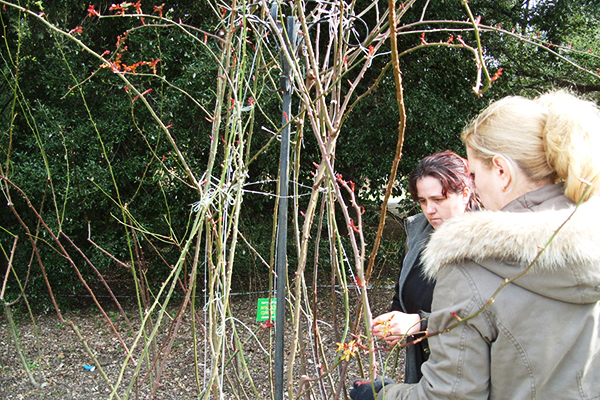
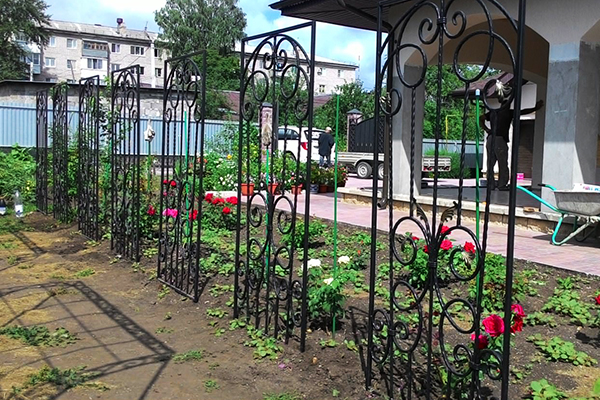
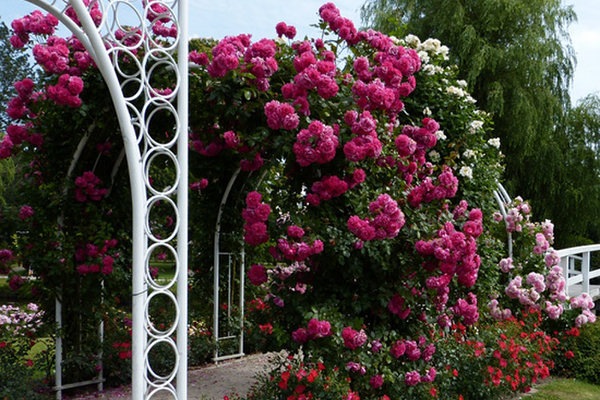
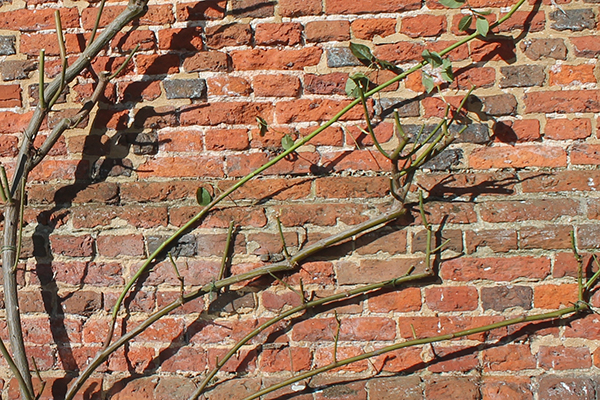
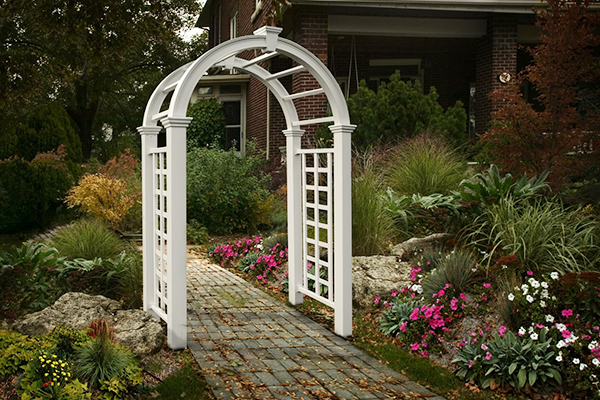
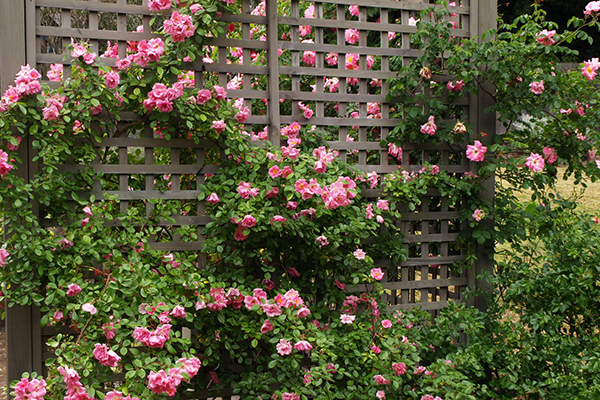
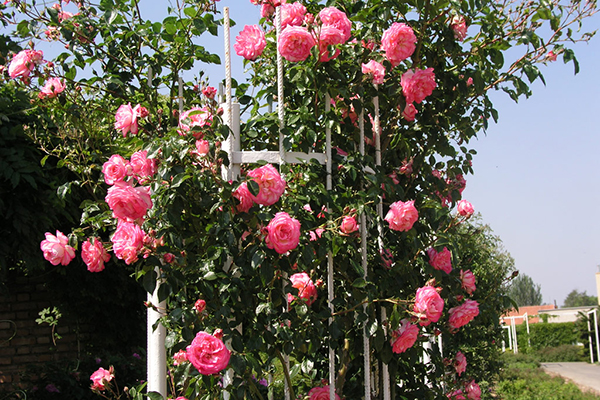
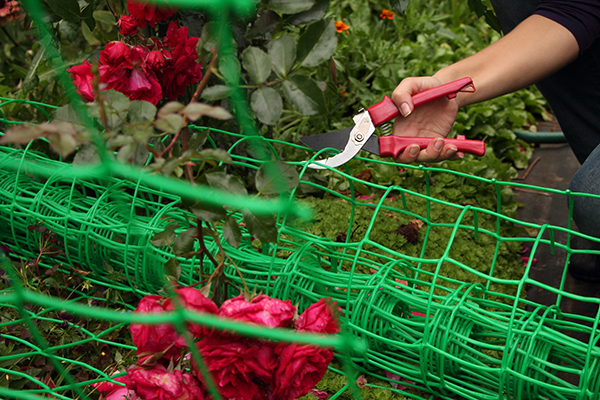
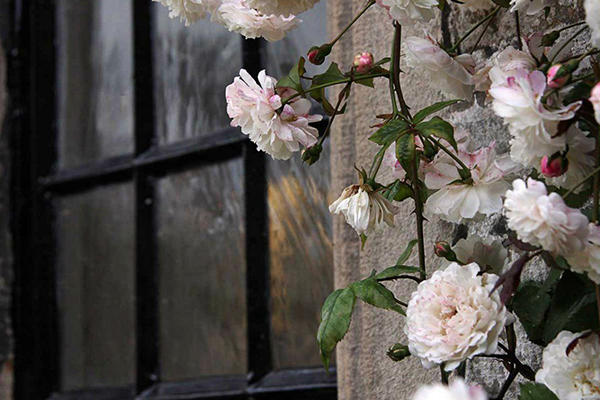
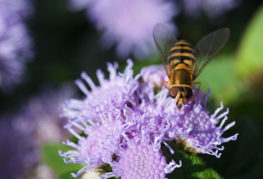

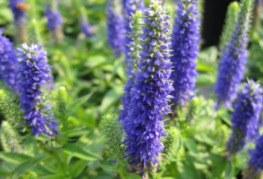



and will be published shortly.